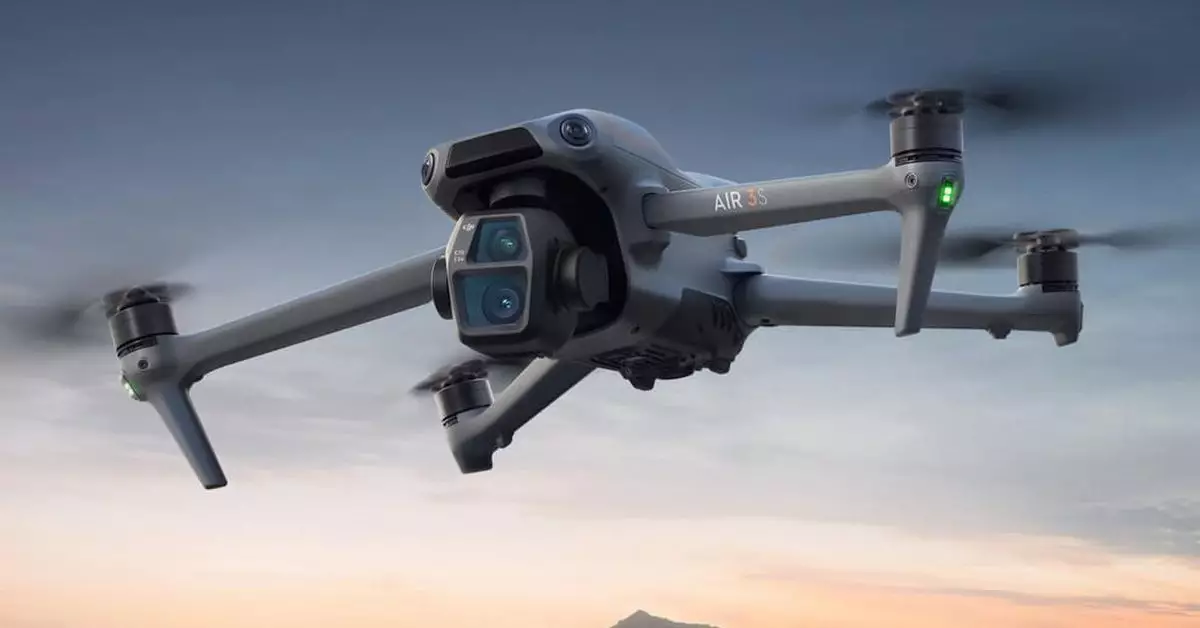The technology landscape is continually evolving, and with it comes the complexities that accompany international trade relations. Recently, DJI, a leading manufacturer in the drone industry, has found itself at the nexus of this complex interaction, as much its technological advancements are celebrated as they are scrutinized. The concern revolves around the import of its flagship consumer drone, the Air 3S, into the United States due to regulatory restrictions imposed by the Department of Homeland Security (DHS). This situation highlights the intensifying examination of the origins of products in the wake of evolving political climates, particularly as geopolitical tensions between the U.S. and China show little sign of abating.
The implications of these trade dilemmas extend beyond simple market dynamics; they speak to the larger issues of human rights and ethical manufacturing practices. DJI claims these restrictions are part of a wider initiative by the U.S. government to scrutinize products originating from countries with questionable labor practices. As it stands, DJI maintains that it has no ties to forced labor within its supply chains, emphasizing compliance with both U.S. law and international ethical standards.
Central to this narrative is the Uyghur Forced Labor Prevention Act (UFLPA), which aims to prevent products made with forced labor from entering the U.S. market. The act provides U.S. Customs and Border Protection with the authority to stop shipments that it suspects may violate these terms. DJI has indicated that this act is directly linked to the current import restrictions affecting its products. Despite its assertions, the reality remains that a significant portion of the discussions surrounding the U.S. ban stems from public and governmental skepticism regarding Chinese companies and their practices.
In response to the UFLPA, DJI has taken the proactive step of documenting its manufacturing processes to clarify that no components are produced in the Xinjiang region, where Uyghurs and other ethnic minorities are reportedly subjected to forced labor. The manufacturer has highlighted that its production facilities are located in Shenzhen and Malaysia, separate from any areas under scrutiny, thus attempting to distance itself from the allegations and restore faith in its brand integrity.
The political landscape presents another layer of complexity for DJI. Legislative efforts to ban DJI drones from U.S. soil have gained traction, particularly with recent bills in the House of Representatives. However, the landscape is not entirely bleak for DJI, as the Senate has strategically omitted such bans from some of its versions of the National Defense Authorization Act, potentially paving the way for a more conciliatory approach to regulating technology imports.
Simultaneously, the operational status of DJI in the U.S. remains uncertain. While it has not faced a complete ban, the company has experienced significant limitations on its ability to distribute the Air 3S and other consumer products. This impacts not just DJI’s bottom line but also the consumers who have come to rely on their drones for recreational and professional use.
Future Prospects and Industry Implications
As these developments continue to unfold, DJI has expressed optimism regarding a resolution to the issues at hand, seeking to collaborate with U.S. authorities to clarify its position and establish a path towards reinstating its products in the market. The future of drone technologies and their integration into civilian life may very well hinge on how companies like DJI navigate this complex interplay of compliance, consumer demand, and political maneuvering.
Moreover, this situation serves as a critical reminder of the implications of global supply chains and the ethical considerations that companies must navigate as they expand their businesses internationally. The ongoing tension underscores the importance of transparency and accountability in an era where consumers are increasingly aware and concerned about the origins of their products and the ethical implications behind them.
The evolution of DJI’s Air 3S and its associated challenges offers robust insight into the intersection of technology, trade, and human rights. As DJI seeks to overcome the current hurdles, the outcome will be keenly observed not only by drone enthusiasts but also by industry watchers, policymakers, and human rights advocates across the globe.


Leave a Reply
You must be logged in to post a comment.